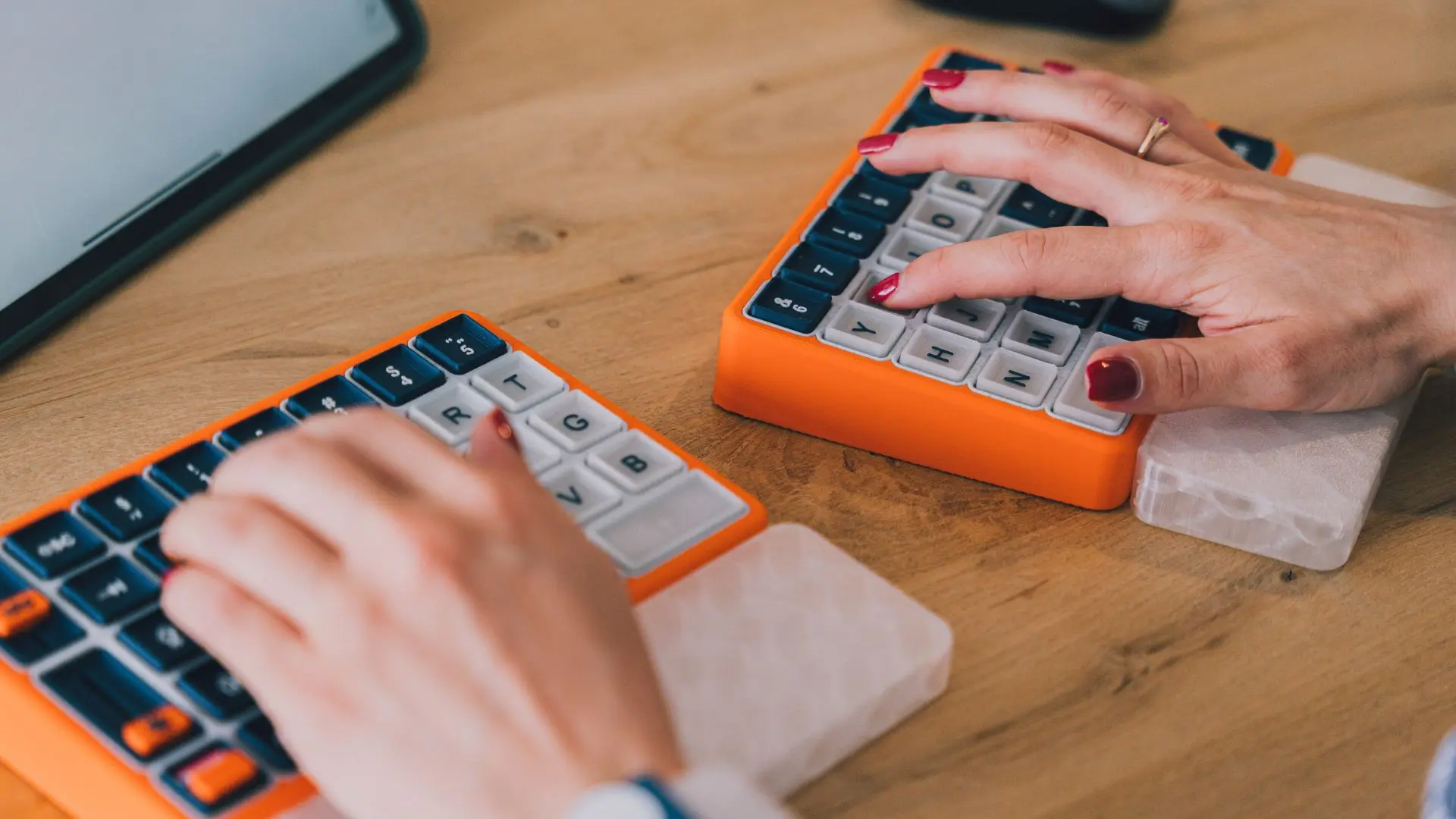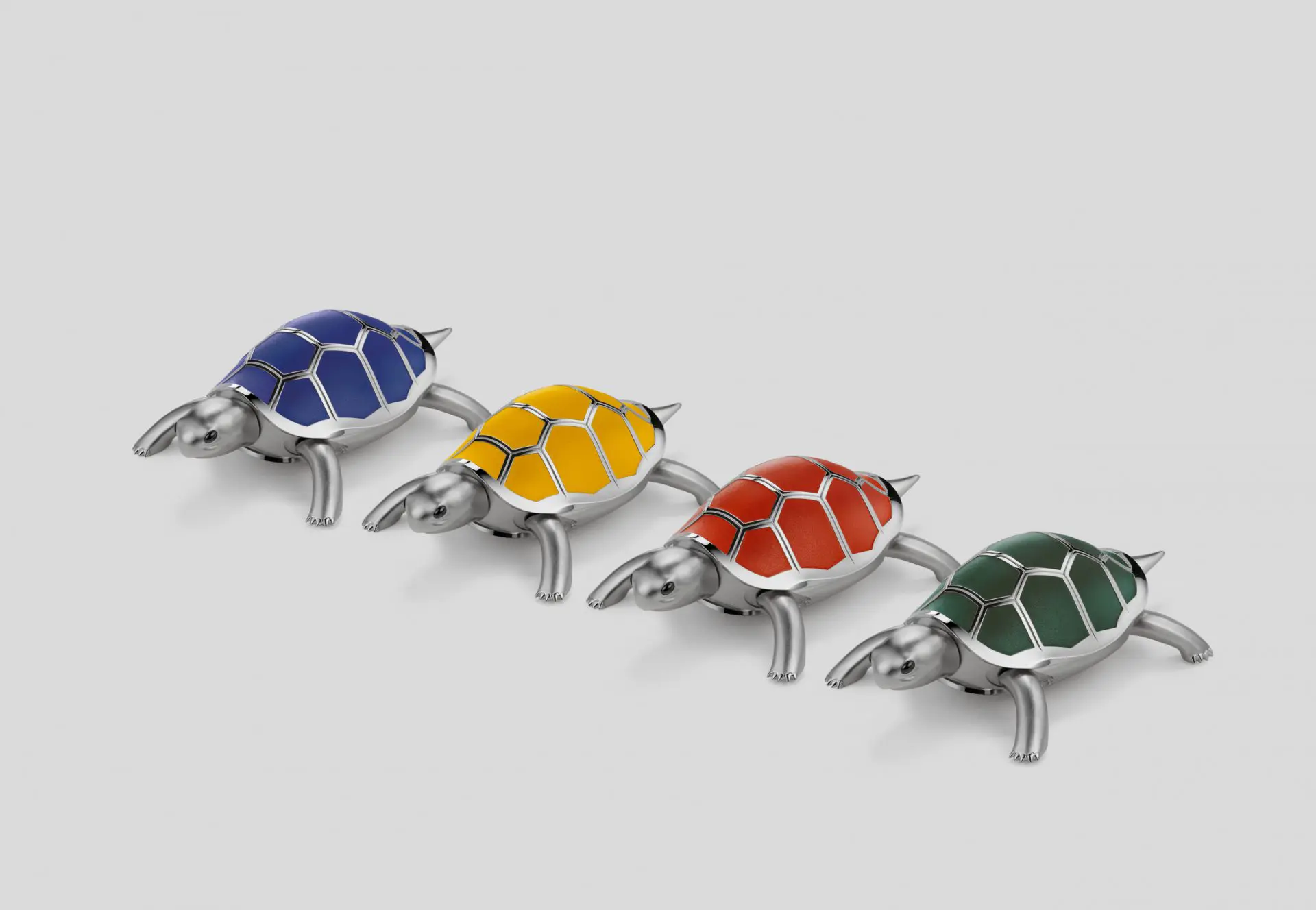Empowering people living with Parkinson through an inclusive and accessible keyboard
Featuring an ergonomic, modular system with integrated sensory cueing, OnCue – designed by Alessandra Galli – reduces mistakes and frustration, adapts to changing needs, and enhances independence for a more inclusive world.

“Shouldn’t the most ergonomic designs be the most widely available? Design should start with the human body.” For designer Alessandra Galli (born in Como in 1995), design is more than a matter of form or function – it’s a vehicle for care, inclusion, and meaningful social impact, such as her OnCue project. In a world where technology is increasingly embedded in everyday life, designing for accessibility is no longer optional; it’s essential.
Parkinson’s disease affects over 8.5 million people globally, a number projected to triple by 2050. Its symptoms – tremors, stiffness, and slowed movement – can make even the simplest digital interactions difficult, if not impossible. Galli, whose work is rooted in empathy and deep user understanding, has taken on this challenge with OnCue, a keyboard conceived not as a high-tech device, but as an adaptive companion that restores autonomy in a digital world.

Educated at NABA in Milan and with a Master’s degree from TU Delft, Galli focuses her practice on overlooked needs and marginalized users. Her design philosophy centers the human experience – fragilities, limitations, and all – offering solutions that enable dignity, independence, and freedom in everyday life. In this interview, Galli shares how she brought that philosophy to life through the design of OnCue.

What inspired the idea behind OnCue?
Alessandra Galli:
“OnCue began as a project at TU Delft University, in collaboration with the Dutch Parkinson’s Association, ParkinsonNL. They highlighted how widespread – and often underestimated – the challenges of using a computer keyboard are for people living with Parkinson’s disease. During my research, I explored cueing techniques: sensory prompts like haptic and visual feedback commonly used to support movement in Parkinson’s patients. However, I soon realized that cueing alone wasn’t enough to address such a complex and multifaceted condition.
What was needed was a more holistic approach – one that not only integrated cueing but also rethought the physical design of the keyboard itself. Here, the world of gaming became a powerful source of inspiration. Gaming keyboards, with their emphasis on precision, comfort, and customization, showed me that combining these features with sensory prompts – and tailoring them specifically for people with Parkinson’s – could result in a truly adaptive product, capable of responding to the wide range of symptoms and daily fluctuations associated with the disease.”

How does OnCue work, and what technical features make it particularly suitable for people living with Parkinson’s disease?
Alessandra Galli:
“OnCue is a modular, ergonomic keyboard with wearable cuffs that combine haptic and visual cues to help alleviate symptoms of Parkinson’s disease. The system targets tremors and bradykinesia – slowed movement common in Parkinson’s – aiming to reduce frustration and prevent the avoidance behaviors often associated with keyboard use. The design features a split layout to encourage a more natural hand and arm posture, and a compact format to accommodate the limited range of movement caused by the disease. Raised-edge keycaps help stabilize the fingers, improving typing accuracy and control. Vibrations from the keys and cuffs support a steady typing rhythm, while AI-driven visual cues highlight the most likely next letters, helping reduce errors and prevent freezing episodes.”

What kind of feedback have you received from early users, and what tangible benefits have emerged so far?
Alessandra Galli:
“OnCue was developed through iterative testing with early prototypes exploring various cueing techniques – haptic feedback, visual cues, and auditory signals. Among these, wrist-based haptic feedback received the most positive response, with users describing it as calming and relaxing. This was especially meaningful, given that people with Parkinson’s often associate keyboard use with stress and frustration. Some also noted that fingertip vibrations helped compensate for reduced sensory sensitivity.
However, no single feature stood out as universally preferred – feedback varied significantly from person to person. This revealed a key insight: Parkinson’s is highly individual and variable. Each user experiences the condition differently, which led me to incorporate a variety of sensory prompts and adopt a modular design supported by customization software. This allows users to tailor the device to their specific needs, adjusting settings based on daily routines, preferences, and symptom intensity.

Although initial testing was brief, it provided valuable insights and confirmed the importance of personalization. Given the complexity of the condition, longer and more extensive testing is essential to gather meaningful data. The electronic components are still in development, and active fundraising is underway. The aim is to begin a one-month real-world testing phase by the end of September, in collaboration with Parkinson’s centers, with occupational therapists playing a key role in supporting and evaluating the experience.”
In your view, how can design genuinely improve the quality of life for people dealing with conditions like Parkinson’s?
Alessandra Galli:
“I believe design should empower people to stay in control of the products they use, rather than letting technology take over. A common workaround for keyboard use among people with Parkinson’s is speech-to-text dictation, which can offer functional benefits. But from the user’s perspective, it often comes with significant limitations: speaking aloud to write an email in a shared space can feel embarrassing or intrusive. It also requires extra cognitive effort to articulate thoughts clearly while speaking, which can increase stress and reduce overall comfort.
OnCue, for example, integrates AI – but what truly matters to me is how that AI is implemented. The visual cue feature suggests the most likely next letters to guide typing. It’s designed to support the user and simplify interaction, not to take control. I’m convinced that design can genuinely improve the lives of people with Parkinson’s when it helps them continue using everyday technology in ways that feel familiar and natural. The goal isn’t to replace or disrupt how people interact, but to adapt tools so they can keep doing things their own way.”

Do you think companies today are truly mindful of inclusivity, or is there still a long way to go?
Alessandra Galli:
“I believe there has been progress overall, and awareness around inclusive design is growing. Still, there’s a long way to go—especially when it comes to hardware like keyboards and mice. What I find hard to understand is the market logic that treats ergonomic versions as niche products. Shouldn’t the most ergonomic designs be the most widely available? Design should start with the human body. I understand that combining aesthetics with real ergonomics can be challenging, but in my view, user well-being should always come first. The contrast between industries is telling. In gaming, there’s a huge range of devices optimized for performance, comfort, and customization.
But in assistive technology, options are often limited and outdated, and that gap speaks volumes. Entertainment matters and deserves investment, but we should also ask why the tools people rely on daily don’t receive the same level of innovation or care. Inclusivity should never be an afterthought. It needs to be embedded in the design process from the beginning and actively integrated into the portfolios of companies that already have the resources and infrastructure to support underrepresented user groups.”











